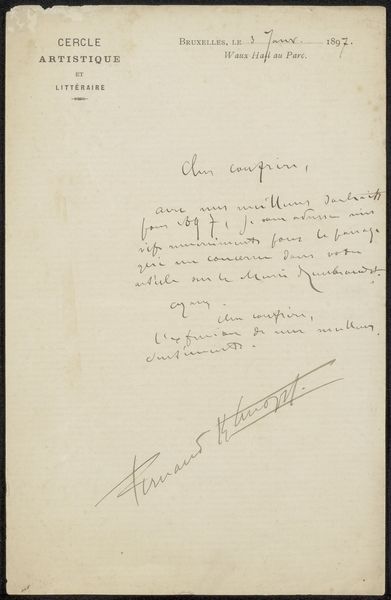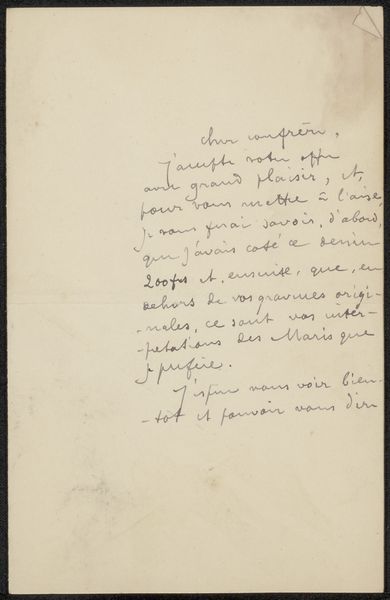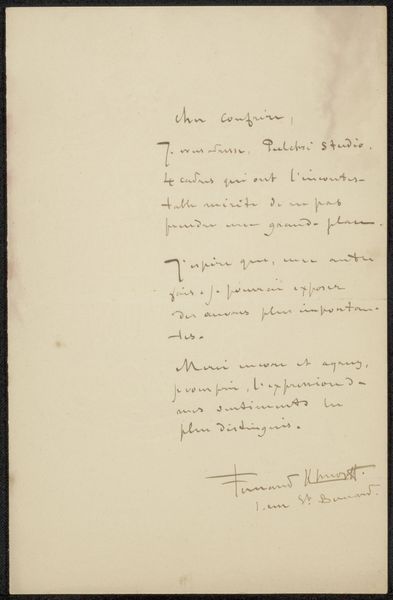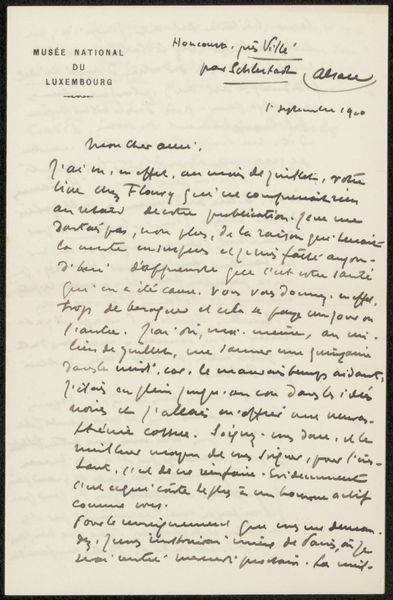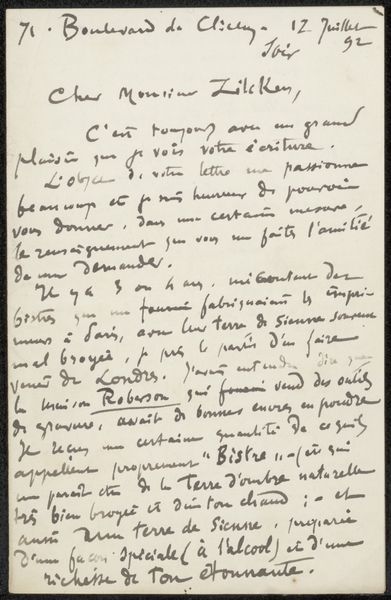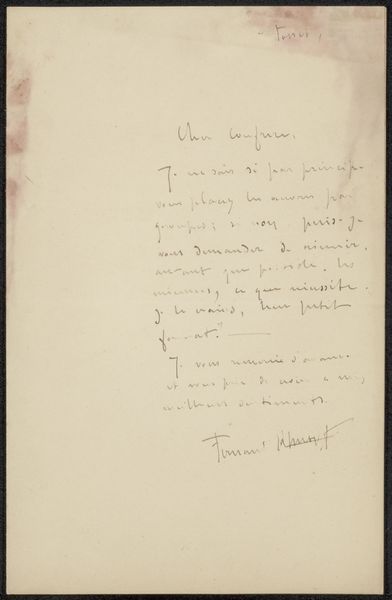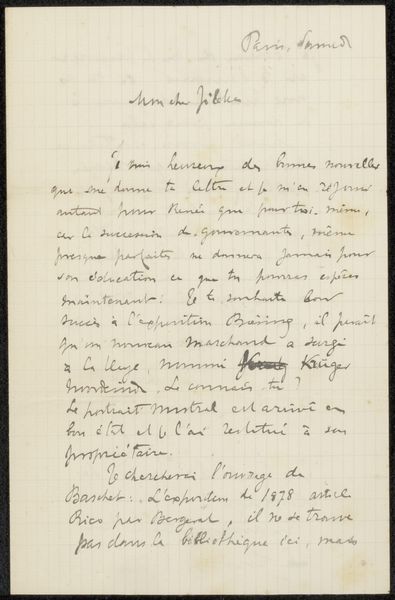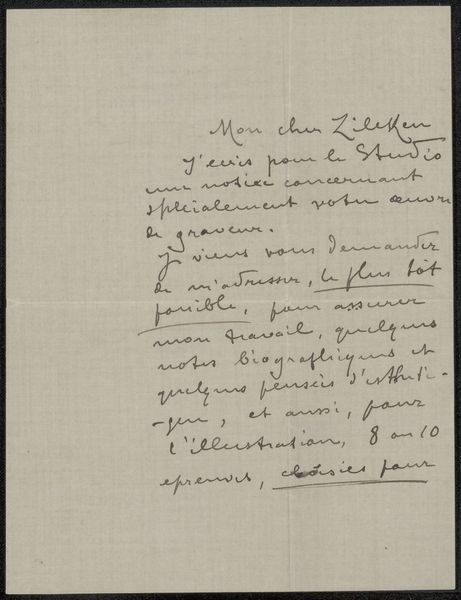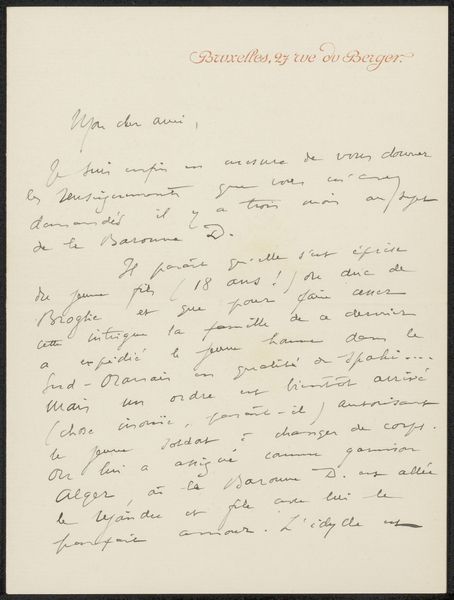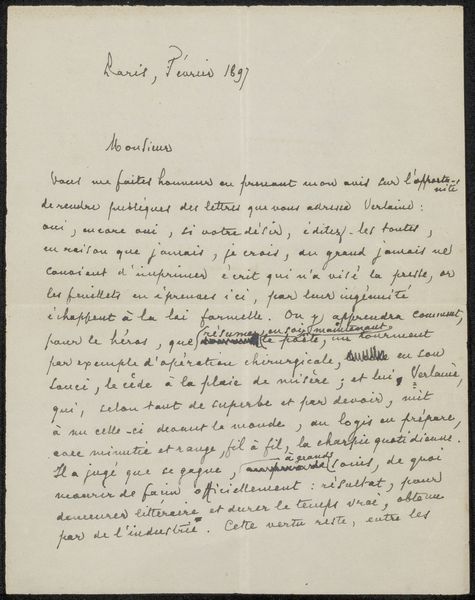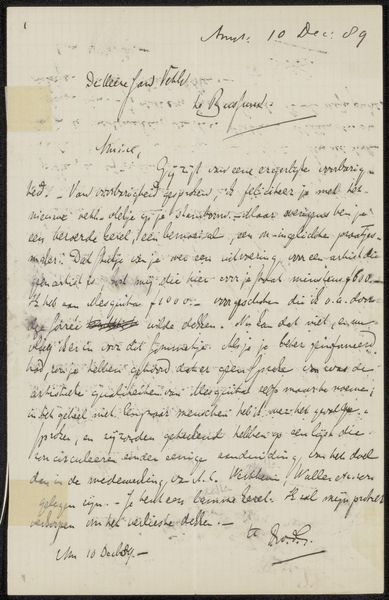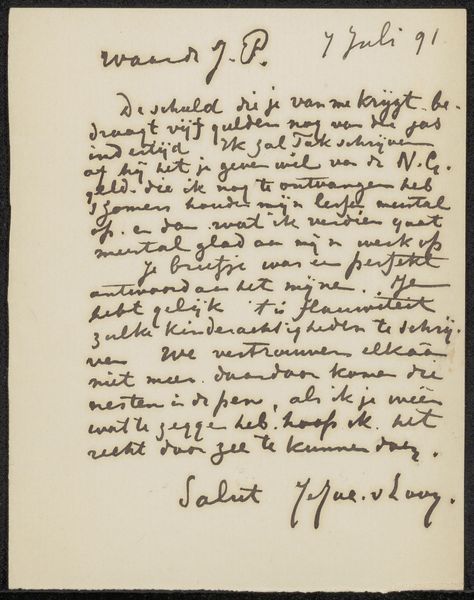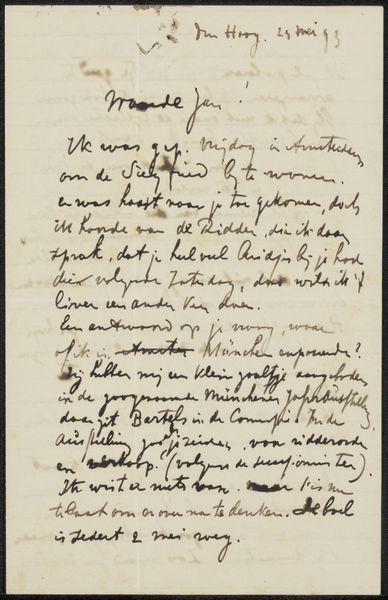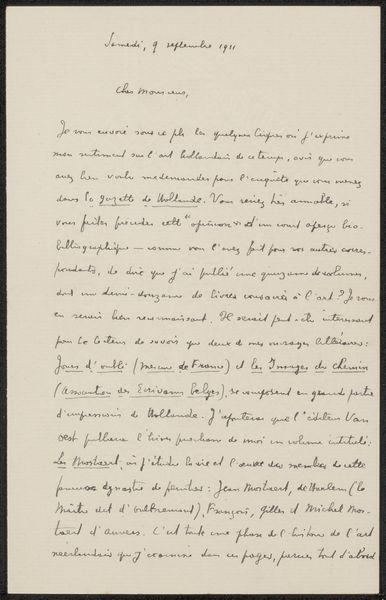
drawing, paper, ink
#
drawing
#
paper
#
ink
#
symbolism
#
calligraphy
Copyright: Rijks Museum: Open Domain
Curator: This is a letter, "Brief aan Philip Zilcken," created sometime between 1868 and 1921 by Fernand Khnopff. It's crafted with ink on paper, showcasing Khnopff's distinctive script. Editor: Immediately, I'm drawn to the delicate nature of the materials. You can almost feel the texture of the paper, see the fluidity of the ink, and the time that has passed seems palpable. It speaks to the fragility and enduring power of communication itself. Curator: The fact that he chose ink on paper tells us something about the artist's relationship to production. Was paper readily available to Khnopff or was this choice intentional? Editor: Beyond that, calligraphy carries tremendous symbolic weight. In a time before typewriters were commonplace, the personal touch of handwriting made correspondence intensely meaningful. The script itself would reveal the character and mood of the writer. The formality suggests the importance of Zilcken in Khnopff's world. Curator: Exactly, and think about the social network it implies: the exchange between artists, critics, and patrons which formed the very support structure of artistic production in the 19th and early 20th centuries. Letters weren't just personal; they were professional. This material evidence allows us insight into that world. Editor: We can infer so much simply from observing Khnopff’s use of language. A close reading would undoubtedly enrich our understanding. The cultural norms, implicit assumptions, artistic priorities. The message's tone suggests the importance of reputation and belonging in these circles. Curator: These letters themselves contribute to a greater understanding of labor; labor that created the artistic social network. The art that resulted became commercial as prints and painting that relied on the written word to support sales and collectorship. Editor: In studying materials, methods, or motifs in artwork such as these letter gives voice to more intimate sides to history; as an artist to artist, the material culture that comes to signify history, like an intimate photograph of society’s material processes. Curator: I appreciate how thinking about this work in terms of the resources available and its function opens it up, and deepens our perspective about Fernand Khnopff. Editor: Agreed, examining visual symbols, we uncover emotional power structures of not just interpersonal, but intrapersonal meanings through art such as "Brief aan Philip Zilcken" which will leave cultural echoes forever.
Comments
No comments
Be the first to comment and join the conversation on the ultimate creative platform.
